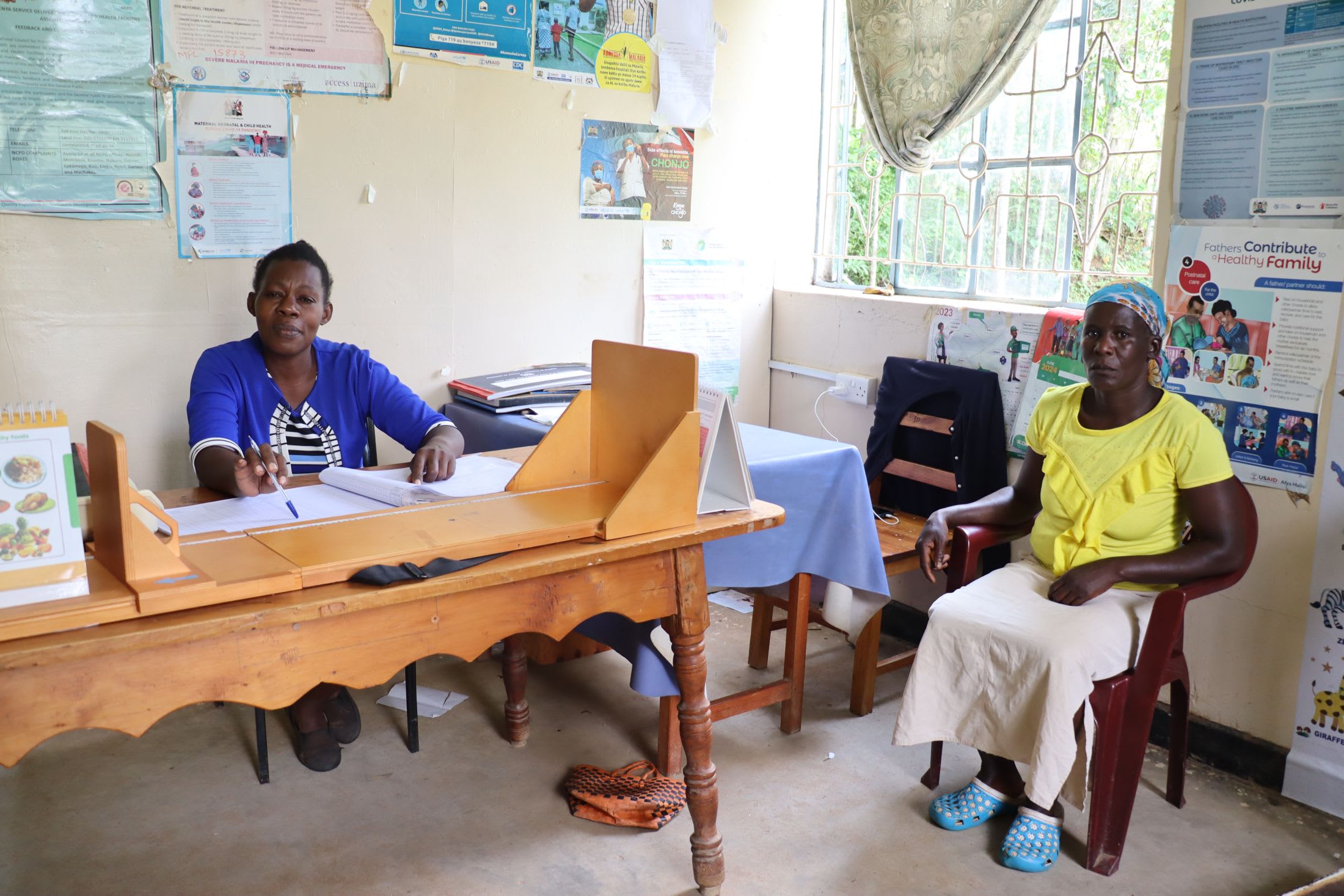Elwasambi Health Center provides medical services for an average of 80 community members a day. This is a giant task for the five staff members, but without reliable, safe water, it is nearly impossible.
A dug well with a submersible pump on the property would seem to be a solution, yet it is actually the source of many issues. When the well's water level drops, the pump inevitably stops working. This leaves the center without access to water and the headache and expense of repairing or replacing the pump, which they can not afford. It is not uncommon for the well to run dry. Still, even when it is operational, the electricity costs to operate the pump are an added expense that should be used for medical supplies and equipment instead.

Nurse Susan by the unprotected well that is often dry.
"The facility had to set aside some amount [of money] that is being given by the government monthly to buy a new pump. They regulate the number of times [we] pump the water for it to stay a bit longer," said 38-year-old nurse Susan Chepkoech.
"We had to do away with admissions because we had no water to provide to the patients. [For] the mothers who come to give birth, we refer them to the neighboring health centers. We handle the outpatients only," continued Susan.

"Water is life; water helps us in doing so many things. Before doing any procedure on a patient, you need water to clean your hands. Without it, it will be very difficult for you as a doctor. [The] human body is created in a way that it needs water, so without water, the body will fail in performing various activities," said Susan.
The health center's only alternative is to use rainwater collected in small tanks. But just like the well, those quickly run dry, especially during the dry season.

Sadly, even when people can collect water from either of the sources, those consuming the water report suffering from water-related illnesses like diarrhea, giardia, dysentery, typhoid fever, and E. Coli infection because the water is not protected.

Susan organizes supplies.
"I think drinking water that harms you or your family should not be encouraged. Treating the diseases that come [from] drinking dirty water is not cheap," Susan continued.
The community surrounding the health center also needs access to water, but an agreement initially made between the health center and the community has fallen short, causing friction that leaves everyone scrambling for water.
"The facility tried to help the community access [water] by placing a standpipe at the entrance of the facility. The dispensary management required the community to pay some amount to help with the electricity bill to pump water to their reach. They tried in the first year, but [in] the second year, they refused. The facility had no option but to remove the tap from the standpipe. People around the facility are now without water. They have to walk for a long distance for water," shared Field Officer Adelaide Nasimiyu.
A well at this healthcare center will not only provide water for staff and patients, bolstering the level of medical care that can be provided, but also relieve some of the water burdens in the surrounding community.
"The proposed water point will enable the community around the dispensary [to] have water throughout the year without walking for long distances searching for water. The facility will have a reliable source; with or without money, they will be able to access clean and safe water throughout the year," concluded Adelaide.
Steps Toward a Solution
Our technical experts worked with the local community to identify the most effective solution to their water crisis. They decided to drill a borehole well, construct a platform for the well, and attach a hand pump.
Well
Abundant water often lies just beneath our feet. Aquifers—natural underground rivers—flow through layers of sediment and rock, offering a constant supply of safe water. A borehole well is drilled deep into the earth to access this naturally filtered and protected water. We penetrate meters, sometimes even hundreds of meters, of soil, silt, rock, and more to reach the water underground. Once found, we construct a platform for the well and attach a hand pump. The community gains a safe, enclosed water source capable of providing approximately five gallons of water per minute. Learn more here!
Handwashing Stations
Alongside each water source, we install two gravity-fed handwashing stations, enabling everyone at the health center to wash their hands. Handwashing is crucial for preventing water-related illnesses within the health center and community. Health center staff will maintain the stations, fill them with water, and supply them with soap, which we often teach them how to make.
Community Education & Ownership
Hygiene and sanitation training are integral to our water projects. Training is tailored to each community's specific needs and includes key topics such as proper water handling, improved hygiene practices, disease transmission prevention, and care of the new water point. Safe water and improved hygiene habits foster a healthier future for everyone in the community. Encouraged and supported by the guidance of our team, a water user committee representative of the community's diverse members assumes responsibility for maintaining the water point, often gathering fees to ensure its upkeep.

 Borehole Well and Hand Pump
Borehole Well and Hand Pump
 Rehabilitation Project
Rehabilitation Project
















